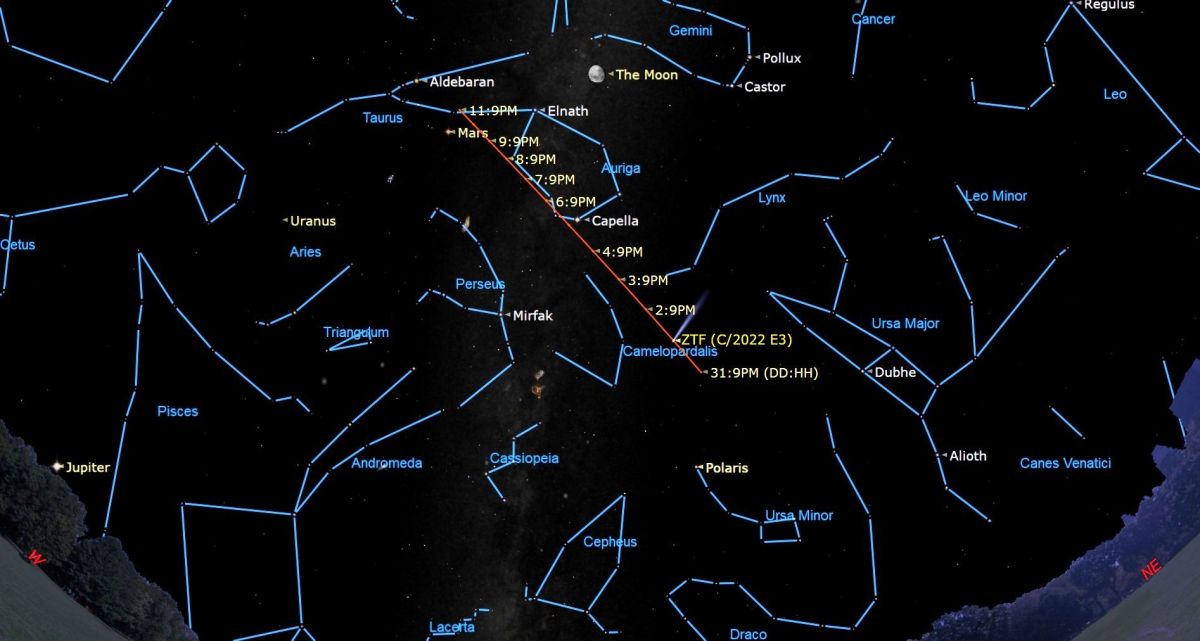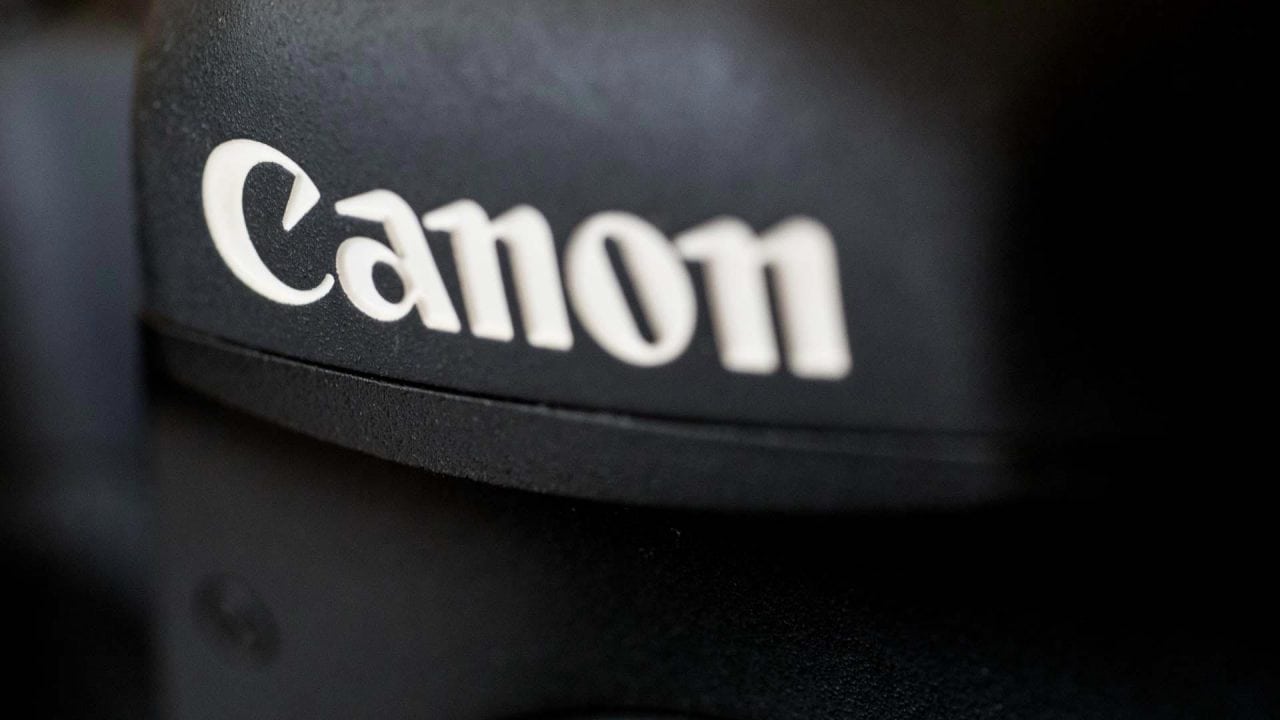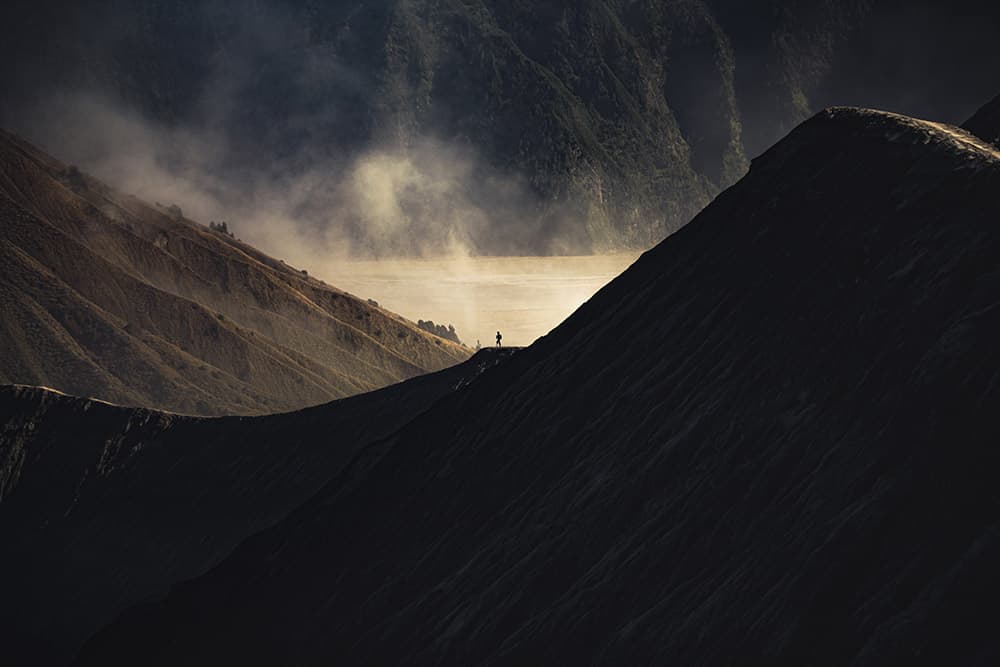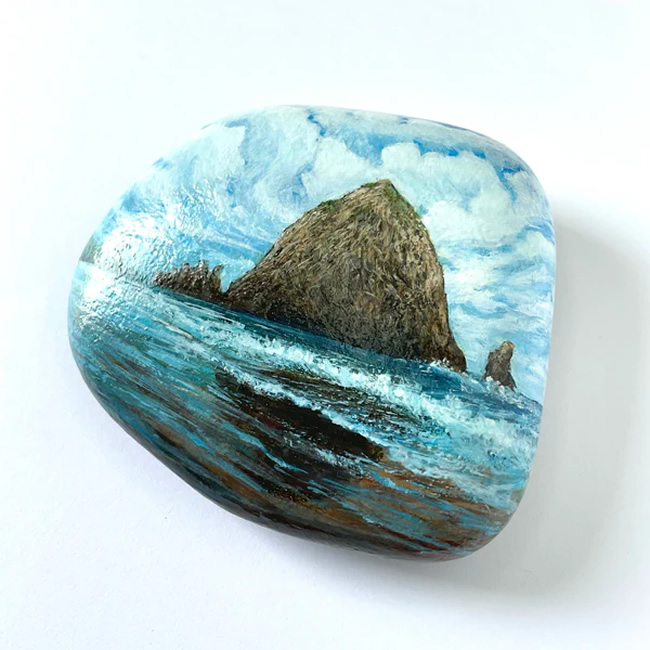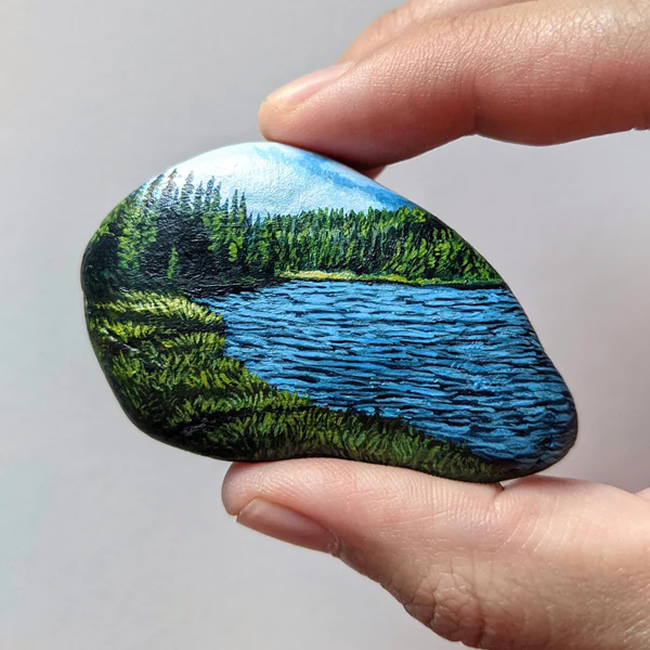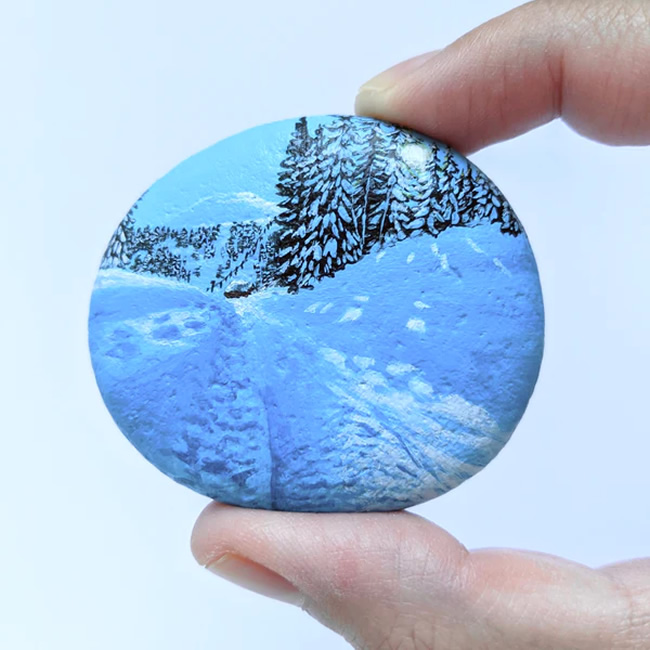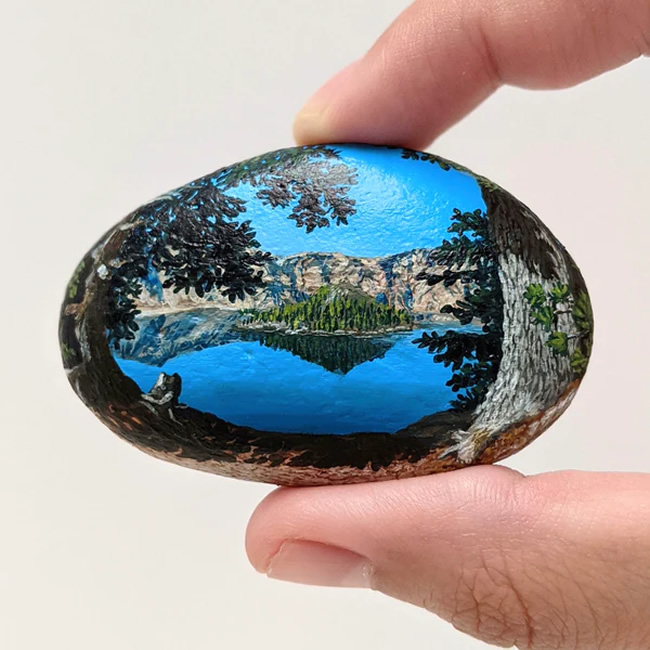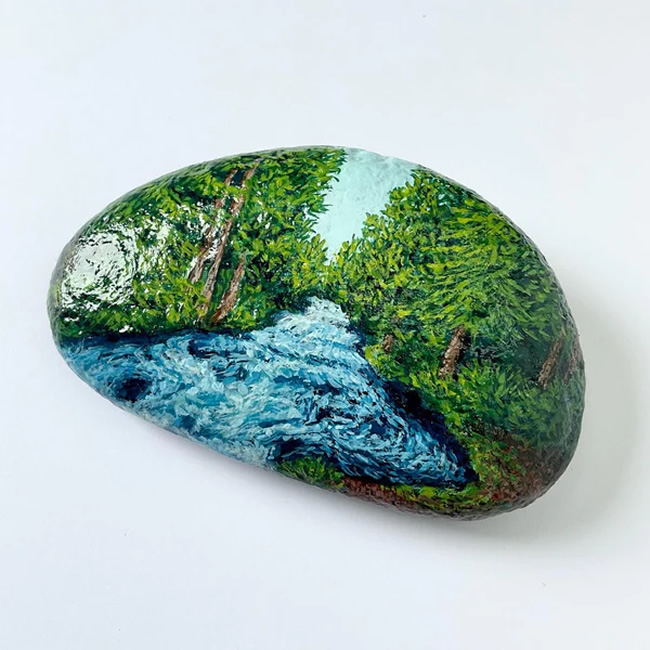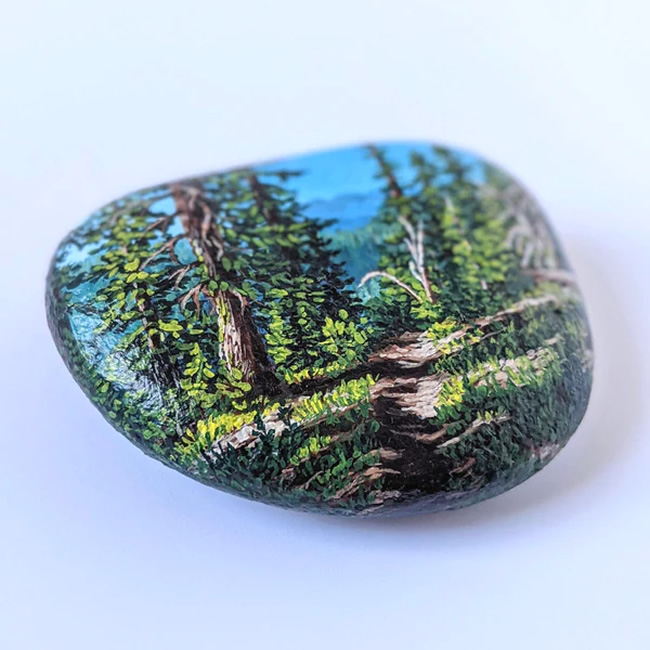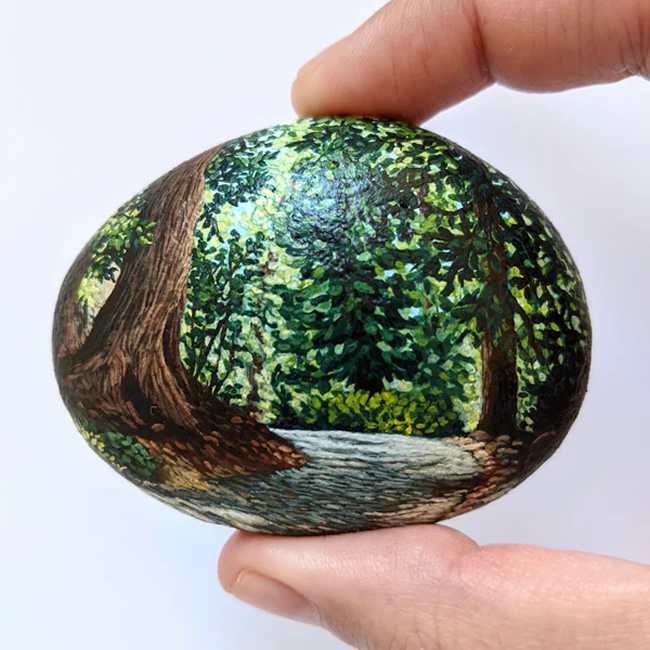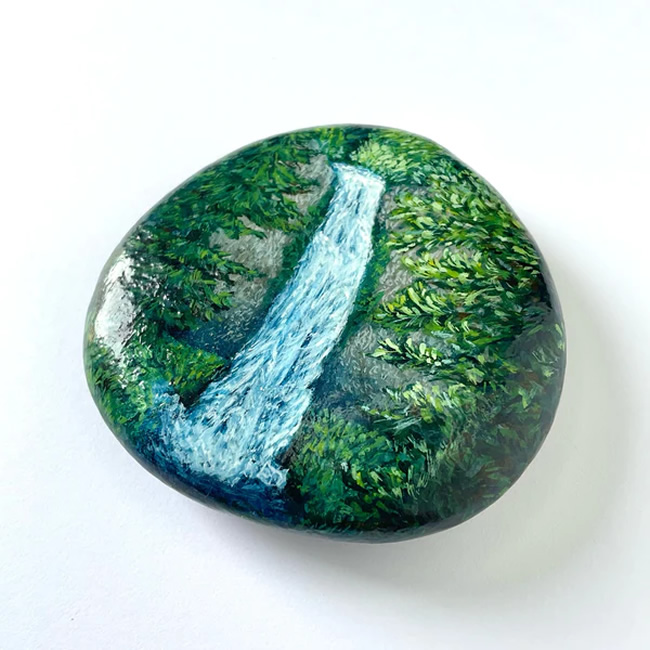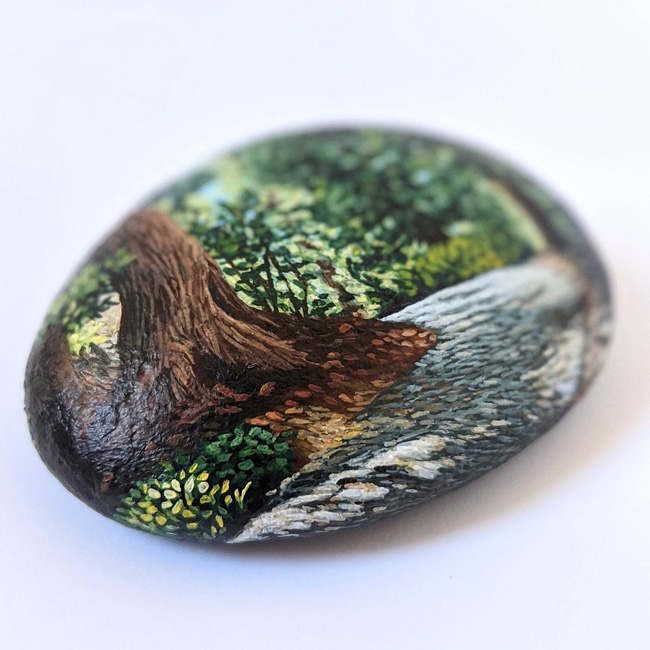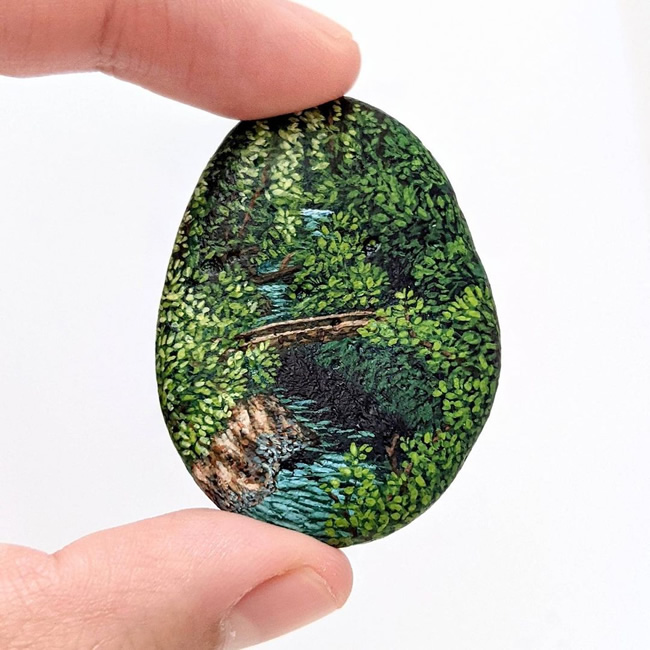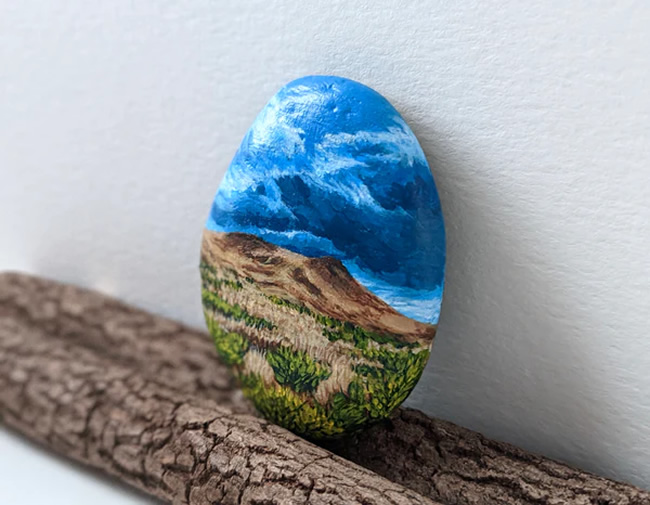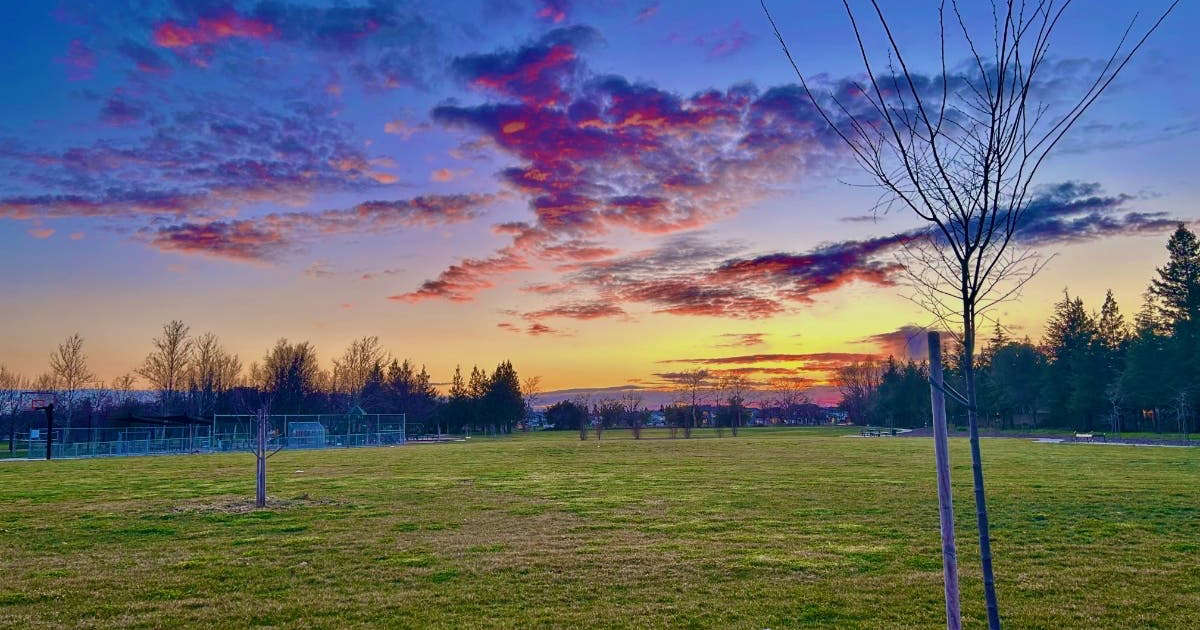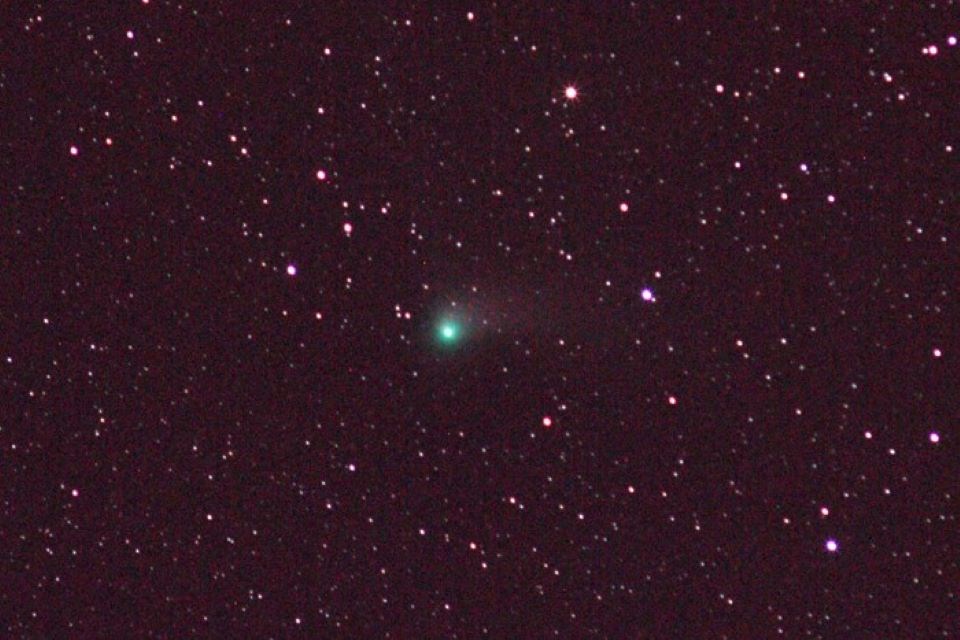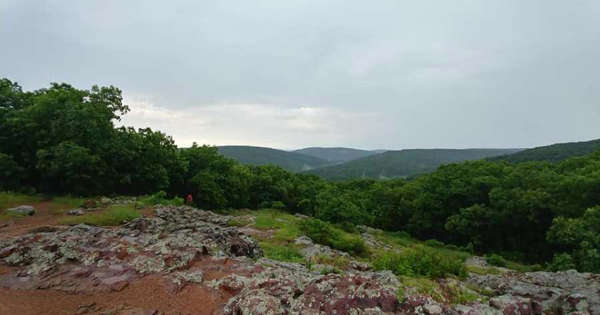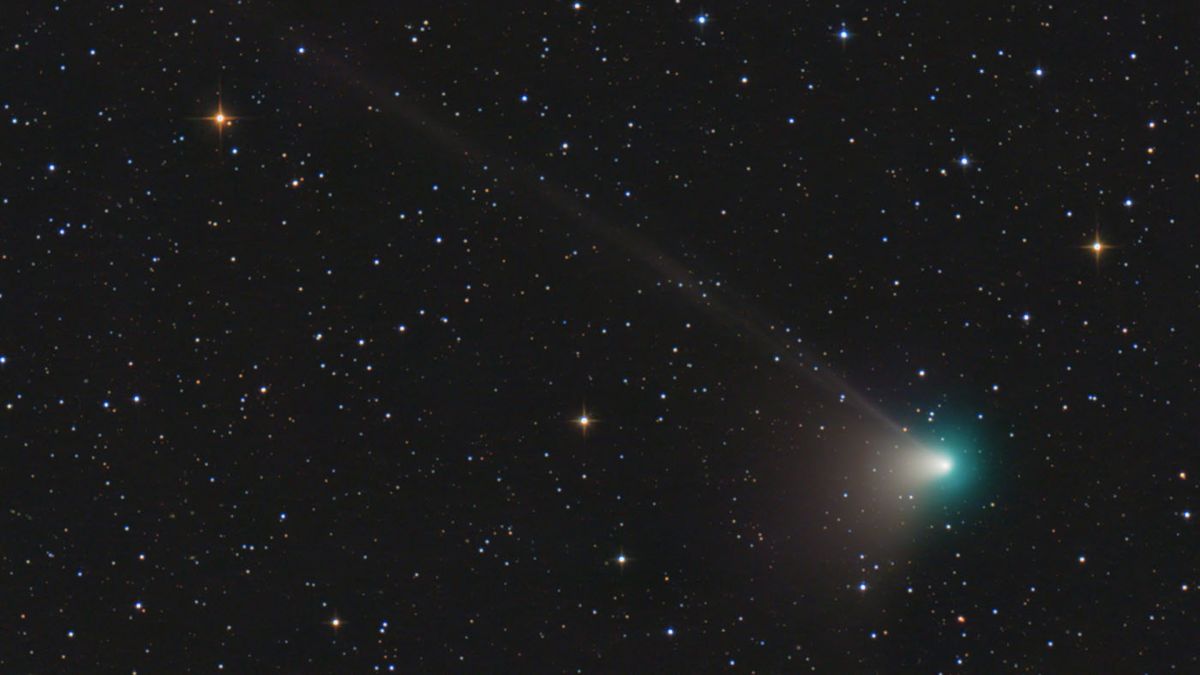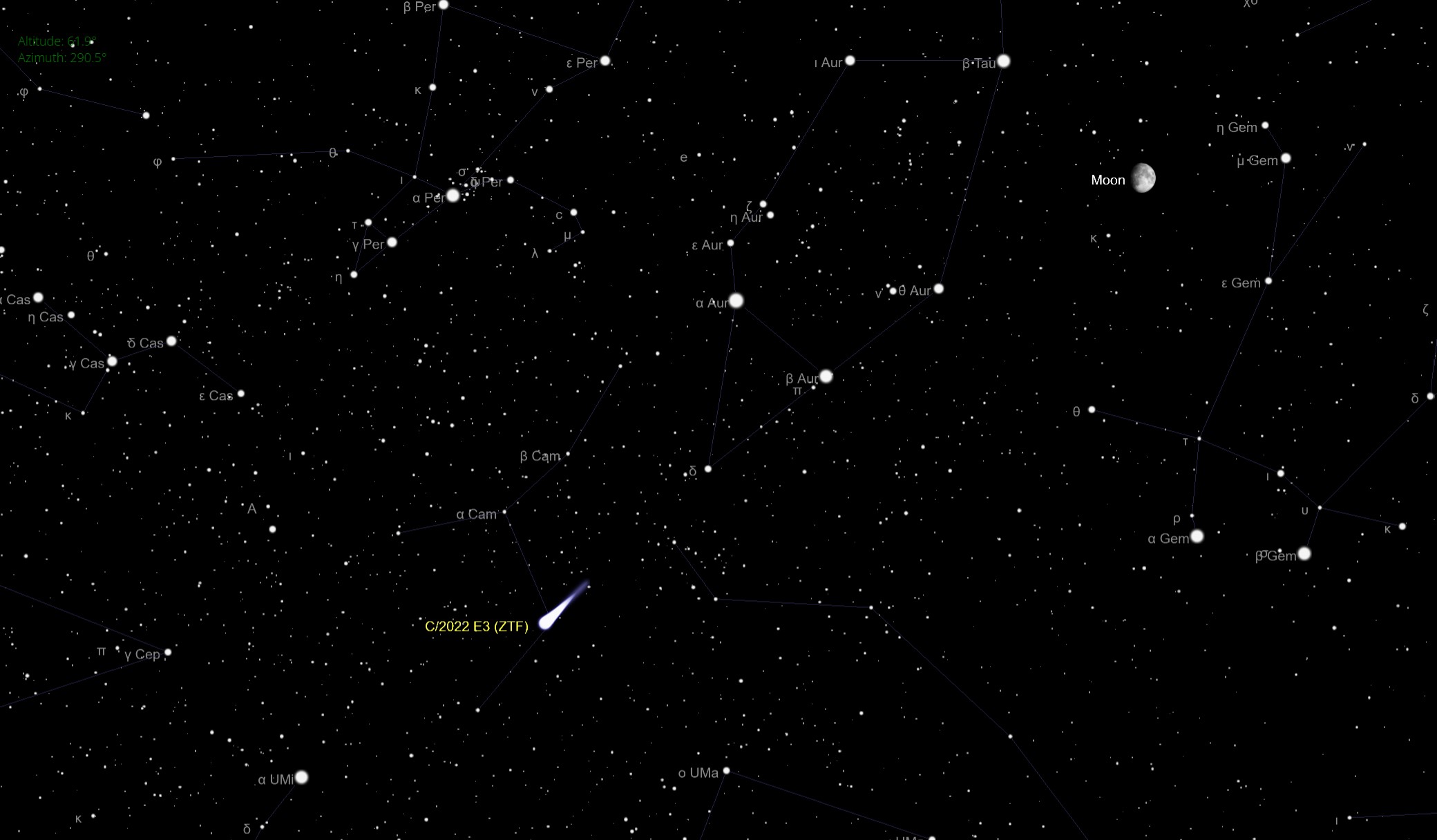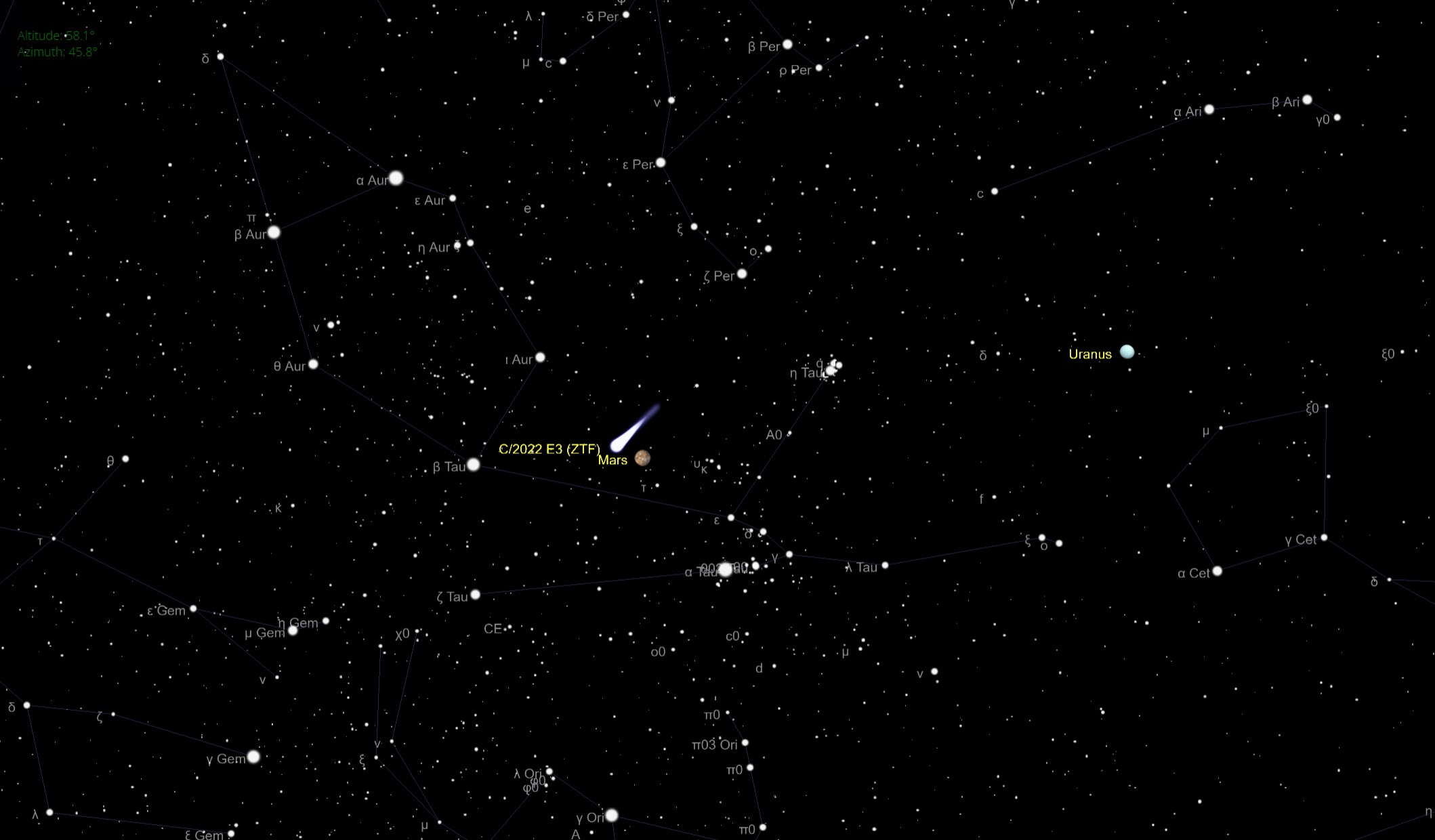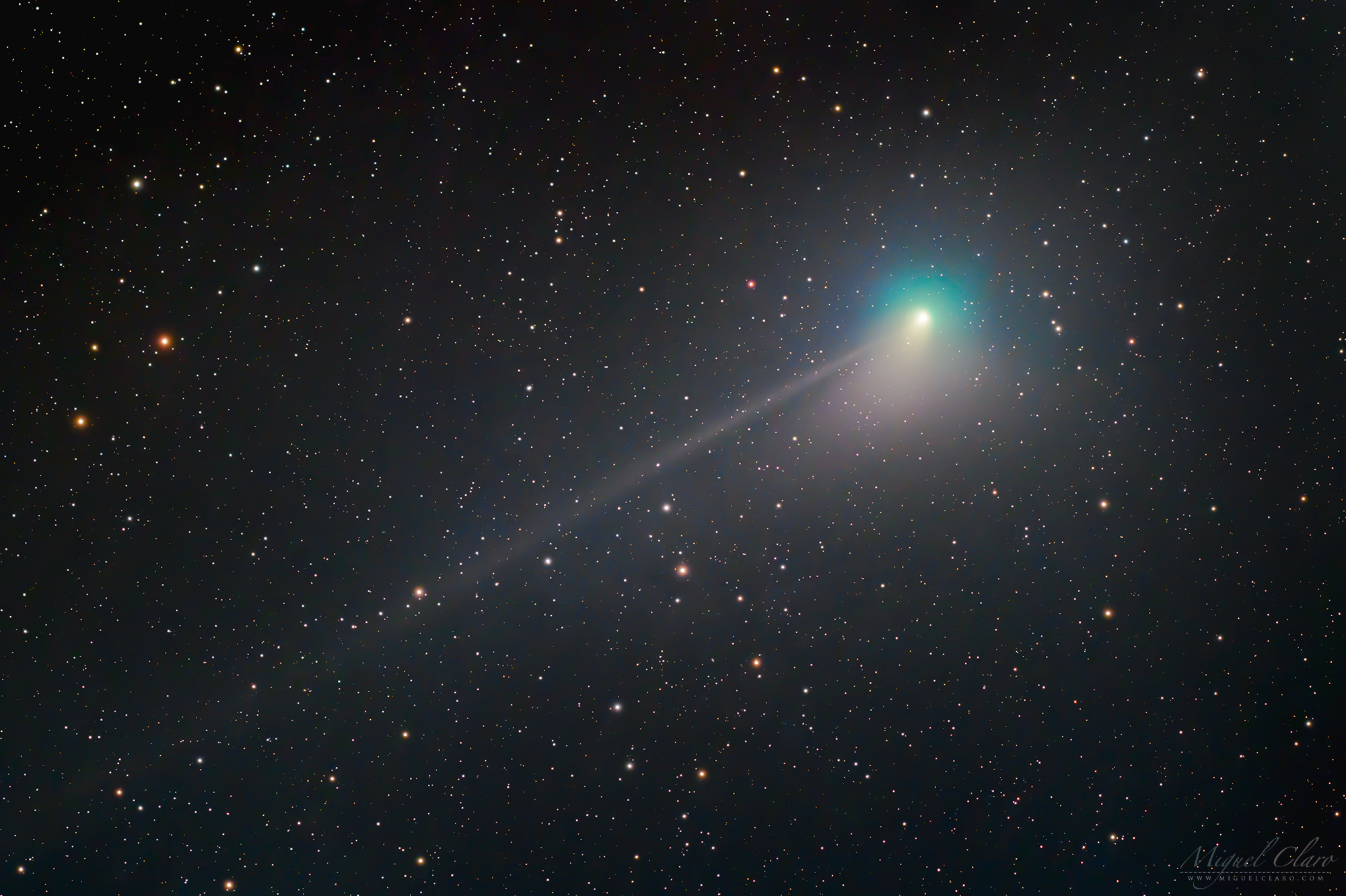Landscape photography is about capturing the scenery of a place. It can be your way of showing how you see the world around you, and a way to capture the beauty of the landscape and environment, whether that’s local, or when travelling. This genre is all about light, location and composition. Thinking about what you include in your image can take your landscape photography from average to being spectacular. Below, in no particular order, we have rounded up some of the best landscape photographs we’ve seen as inspiration for your next landscape shoot…
The Best Landscape Photographs
Brecon in Winter by William Davies
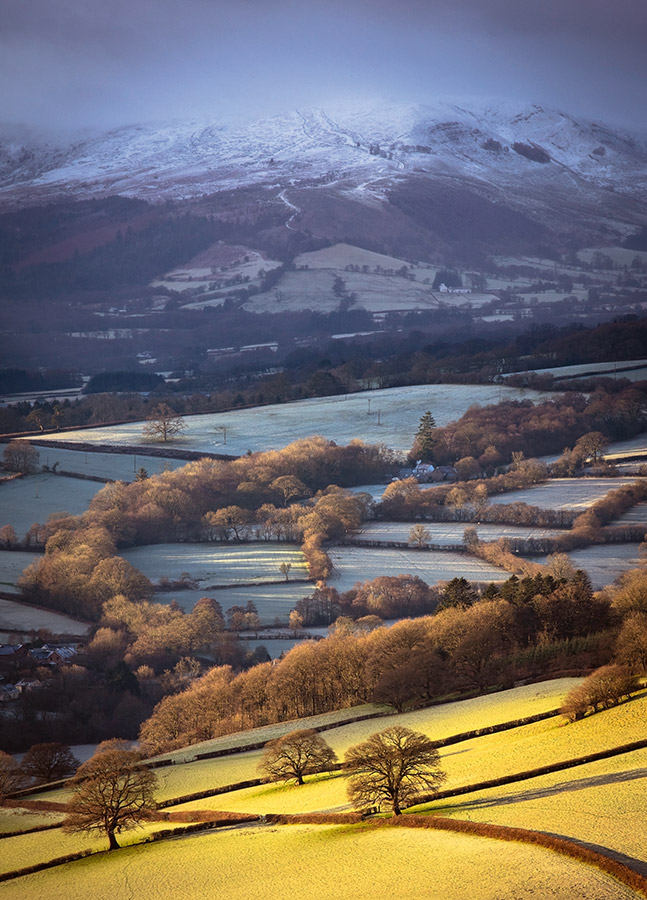
Brecon in Winter – William Davies, winning image from the 2022 Landscape Photographer of the Year competition
William Davies won the Landscape Photographer of the Year 2022 competition with this Winter shot taken from the Pen-y-Crug hillfort.
He said, ‘On this December morning, I arrived in the gloom before dawn but was lucky to find the sunlight soon breaking through a clearing in the snowstorm, adding a burst of warmth and colour to the scene.’
@willdaviesphotography
Morning at Countryside by Mara Leite
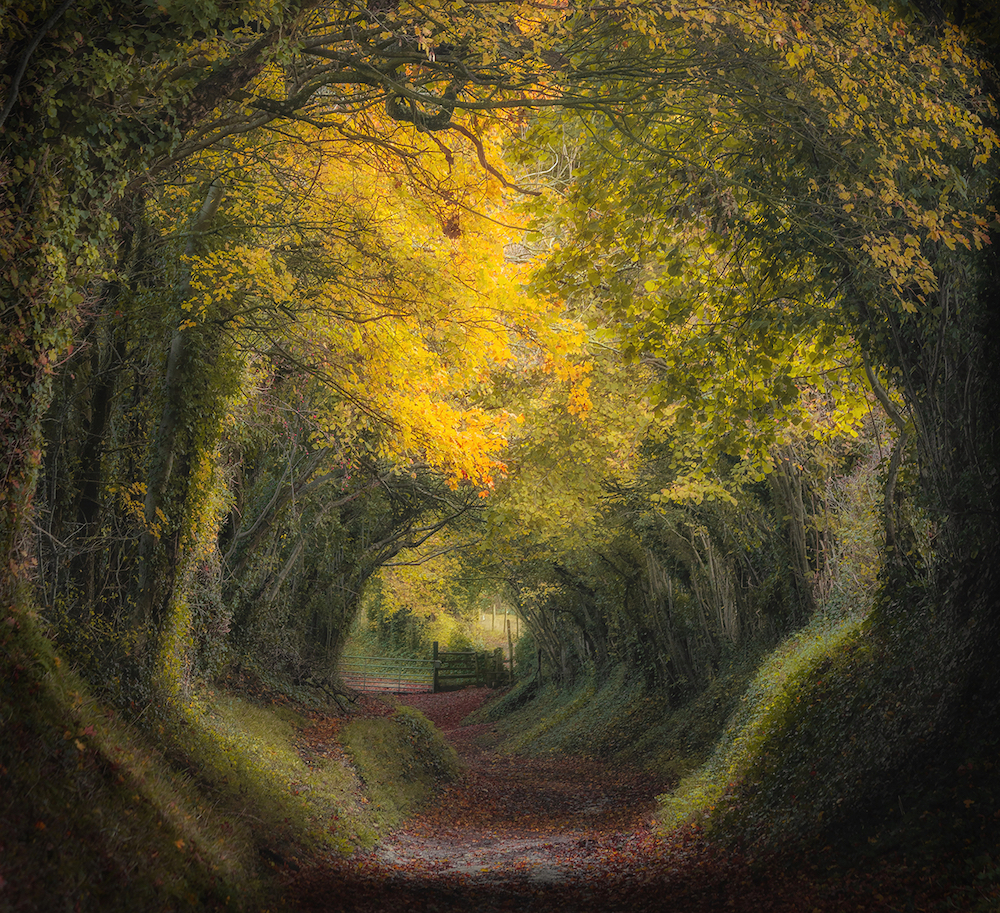
Morning at Countryside – Mara Leite’s winning image from the 2021 Landscape Photographer of the Year competition
Mara Leite won the grand prize of Landscape Photographer of the Year 2021 with this beautiful photograph taken in Halnaker, West Sussex.
Mara told us, ‘Mill Lane is a famous footpath in Halnaker, West Sussex. I was looking for a different composition when I decided to turn the other way and saw this beautiful sight. I love the gate in the background and how the morning light is hitting the leaves and softly entering the tunnel.’
She shared her top tips for landscape photography here: Top tips for award-winning landscapes from LPOTY 2021 winners
@maralphoto
Woolland Woods by Chris Frost

Chris Frost won Landscape Photographer of the Year 2020 with his early-morning shot of Woolland Woods in Dorset, with mist rolling over wild garlic.
‘Taken in spring of 2018 in a wooded area close to Milborne St. Andrew in Dorset, this was the third visit to the area in a matter of days,’ he explains. ‘On the previous days, both devoid of morning mists, the light had been harsh and unappealing but the third day delivered stunning conditions with mist swirling through the trees. The low shooting position allowed more emphasis to be placed on the wild garlic and pathway.’
@chris_frost_photography
Breaking the Time by Aytek Çetin
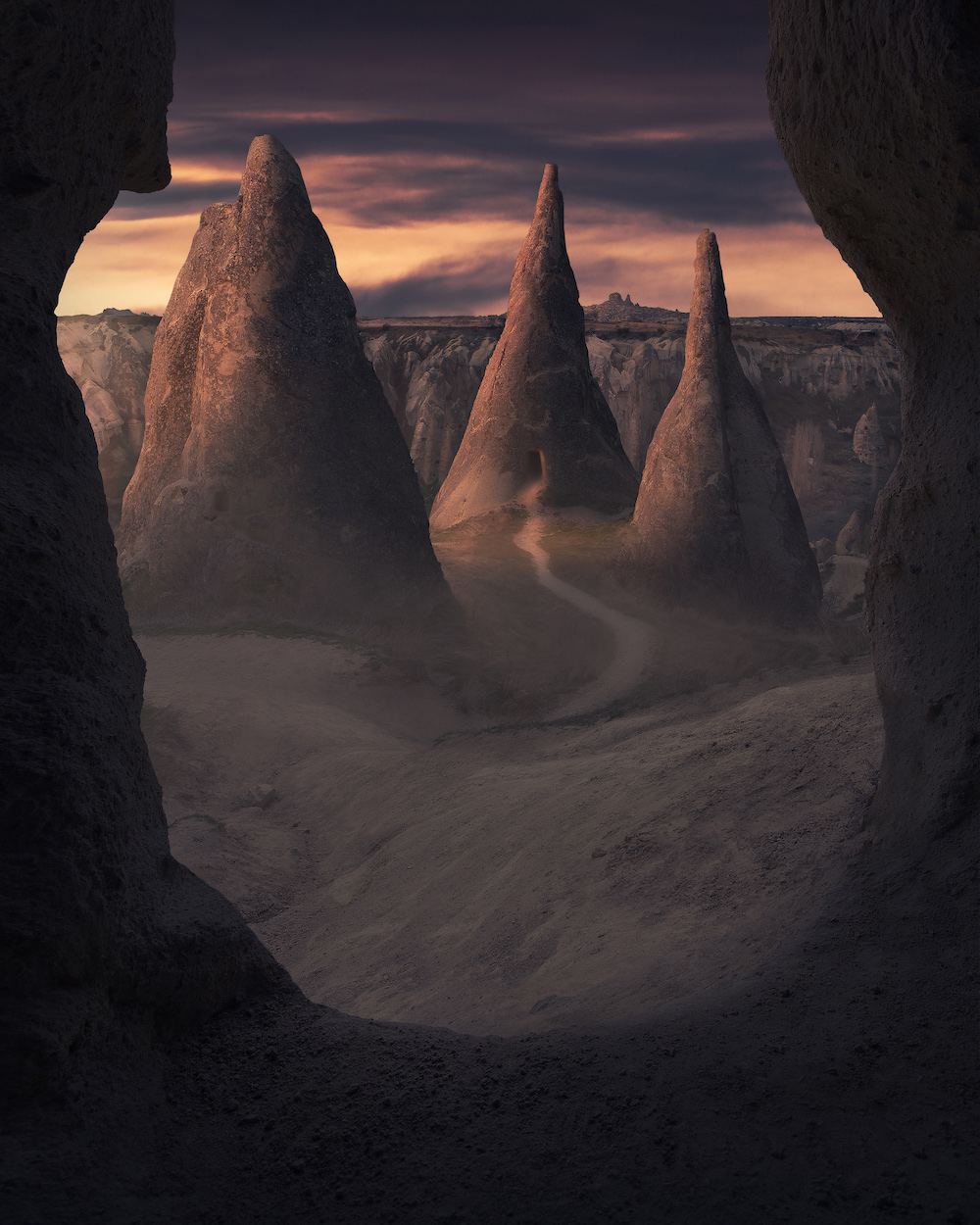
Aytek Cetin – Breaking The Time, Cappadocia, Turkey; part of a portfolio that won him the International Landscape Photographer of the Year 2021 title. Image: Aytek Cetin, The 8th International Landscape Photographer of the Year competition
Aytek Çetin won the overall International Landscape Photographer of the Year 2021 title with his portfolio containing this image Breaking The Time, Cappadocia, Turkey.
Aytek Çetin explained, ‘The 60-million-year-old story of fairy chimneys and the fact they have been home to different civilisations for tens of thousands of years, makes Cappadocia extremely mysterious for me. If you are lucky, you can visit there during hazy, atmospheric conditions with a soft light pushing through at sunrise or sunset.’
These soft light conditions were present when Çetin shot this cleverly framed study of the three fairy chimneys at sunrise on a winter morning. ‘The reason I chose this location is because I love the excitement inside me when the sun first hits the fairy chimneys and how it makes me feel like I’m living in the bronze age.’
Çetin was born and raised in Ankara, Turkey, and revealed, ‘I graduated from the department of sales management at university and, for many years, I worked as a store manager for luxury Italian clothing brands. I used to go to the sea for my limited holidays, but after repeating the same kind of trips for years, it was starting to lose its meaning for me. Then I decided to do something different, to dive deeply into nature. I started to explore remote, mountainous regions and experiencing the energy of the mightiest entities of nature, left me deeply impressed and awakened a love for nature within. An interest in photography followed as a result and has now turned into a passion!’
@aytekcetinphotography
Comet NeoWise Setting by Tanmay Sapkal
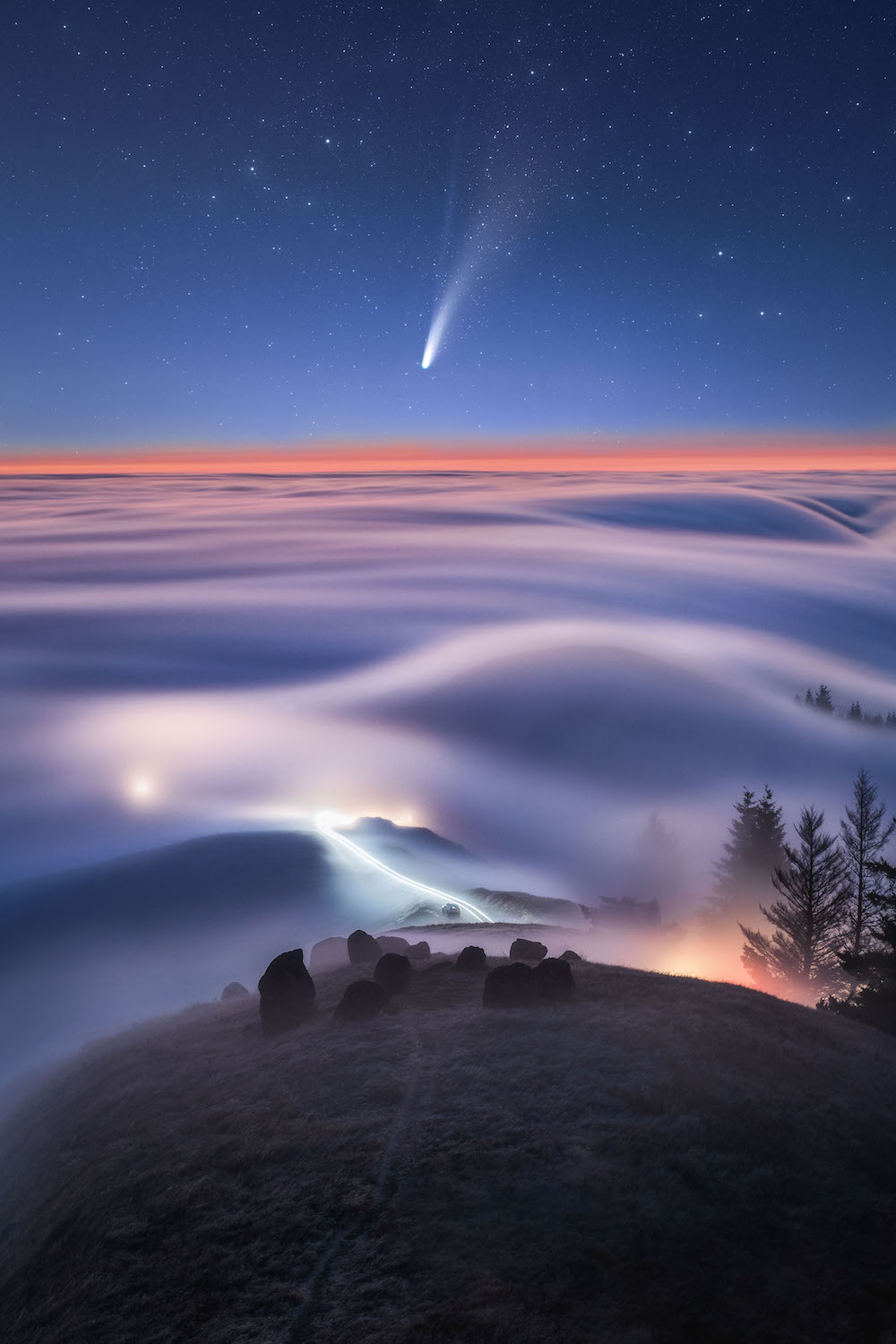
Tanmay Sapkal – Comet NeoWise Setting, won the Photograph of the Year in the International Landscape Photographer of the Year 2021 competition. Image: Tanmay Sapkal/The 8th International Landscape Photographer of the Year competition
Tanmay’s Sapkal’s image Comet NeoWise Setting won the 8th International Landscape Photograph of the Year, which is awarded for a single image at the International Landscape Photographer of the Year competition.
Sapkal is an amateur photographer from the USA, and his winning photograph was taken on Mt. Tamalpais, in Marin County, just north of San Francisco, USA.
Sapkal revealed to us how he shot the image, ‘It is quite a special place for photographers as it stands above the local landscape, which is engulfed in low coastal fog almost every summer evening. After shooting there tens of times over the last four years, I realised that I really liked the way fog looks when it is lit from underneath. I also realised that the comet would become visible in the north west sky, so I started planning this shot.’
He added, ‘It wasn’t possible to line up the comet exactly above the foreground I wanted, so I decided to take two separate exposures. It took a couple of visits to get just the right amount of fog on the hills to create the dreamy setting and then I waited patiently for some cars to drive by and create a blanket of light under the fog. After shooting for more than a few hours that night, my friend and I hurried back down to the car. Little did we know that parking on the mountain after sunset meant getting a parking ticket! But now, in my opinion, it’s the best $80 I have ever spent on parking! Ha ha!’
@theurbanvoyager
Alone in the heart of Java by Marco Tagliarino
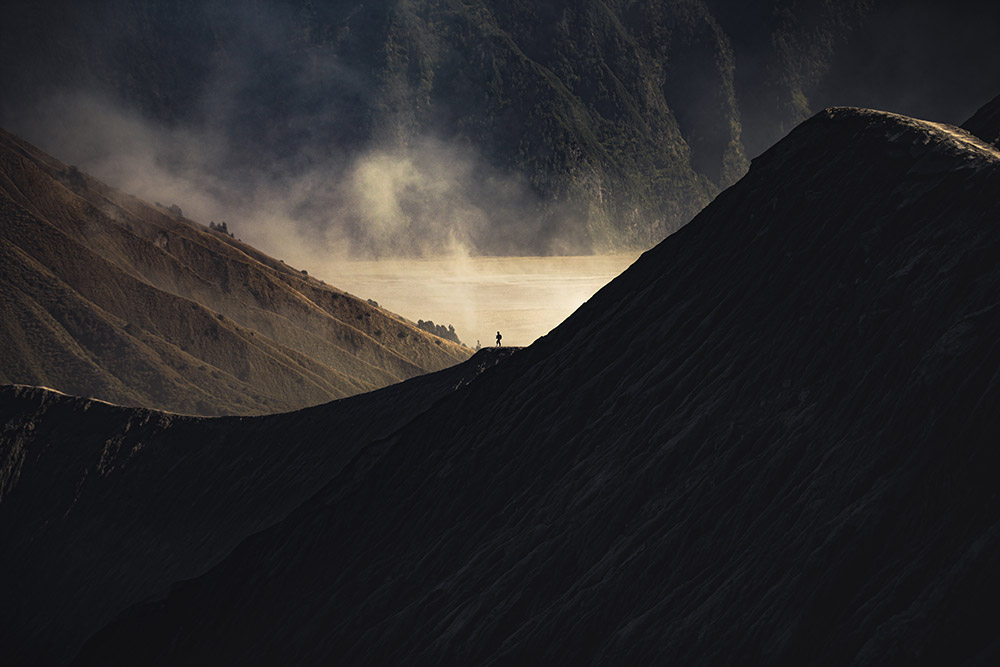
Marco won Round Four of Amateur Photographer of the Year 2022 with this moody landscape.
Marco won our Landscapes round of Amateur Photographer of the Year 2022 with this shot.
Guest judge Verity Milligan said, ‘Some images are all about atmosphere, and this is a great example. Landscape photography is about illustrating an emotion, and forging a connection between the photographer, the subject matter and the viewer. To achieve this, I like to think there is a trifecta of conditions, composition and content which pulls together to create something captivating.
This image does this well, using the atmospheric conditions manifesting towards the back of the composition to create a silhouette of the foreground. The line of the sloping ridge descends, leading the eye into the heart of the image, where a figure is standing taking it all in. This provides a much-needed sense of scale and demonstrates how awe-inspiring the setting really is. The low-key editing enhances the rising mist and the figure, making a compelling landscape photograph.’
@mrc_tagliarino
Morning Mist Filling the Forest by Jamie Spensley

Image: Jamie Spensley
Jamie won the Landscapes round of Young Amateur Photographer of the Year 2022 with this golden image.
Guest judge Verity Milligan said, ‘This is an excellent image that demonstrates a real understanding of how to work with (and manage) light. The uniformity of the trees contrasts with the light streaming through from the left, providing separation from the trees in the foreground to the trees behind. It has a really lovely atmosphere to it and the processing is perfect: not overdone, but just enough to bring out the mood. These are the conditions that most landscape photographers hope for, especially at sunrise, and Jamie has made the most of them with this shot.’
@jamie_spensley_
Lake Magadi by Jie Fisher
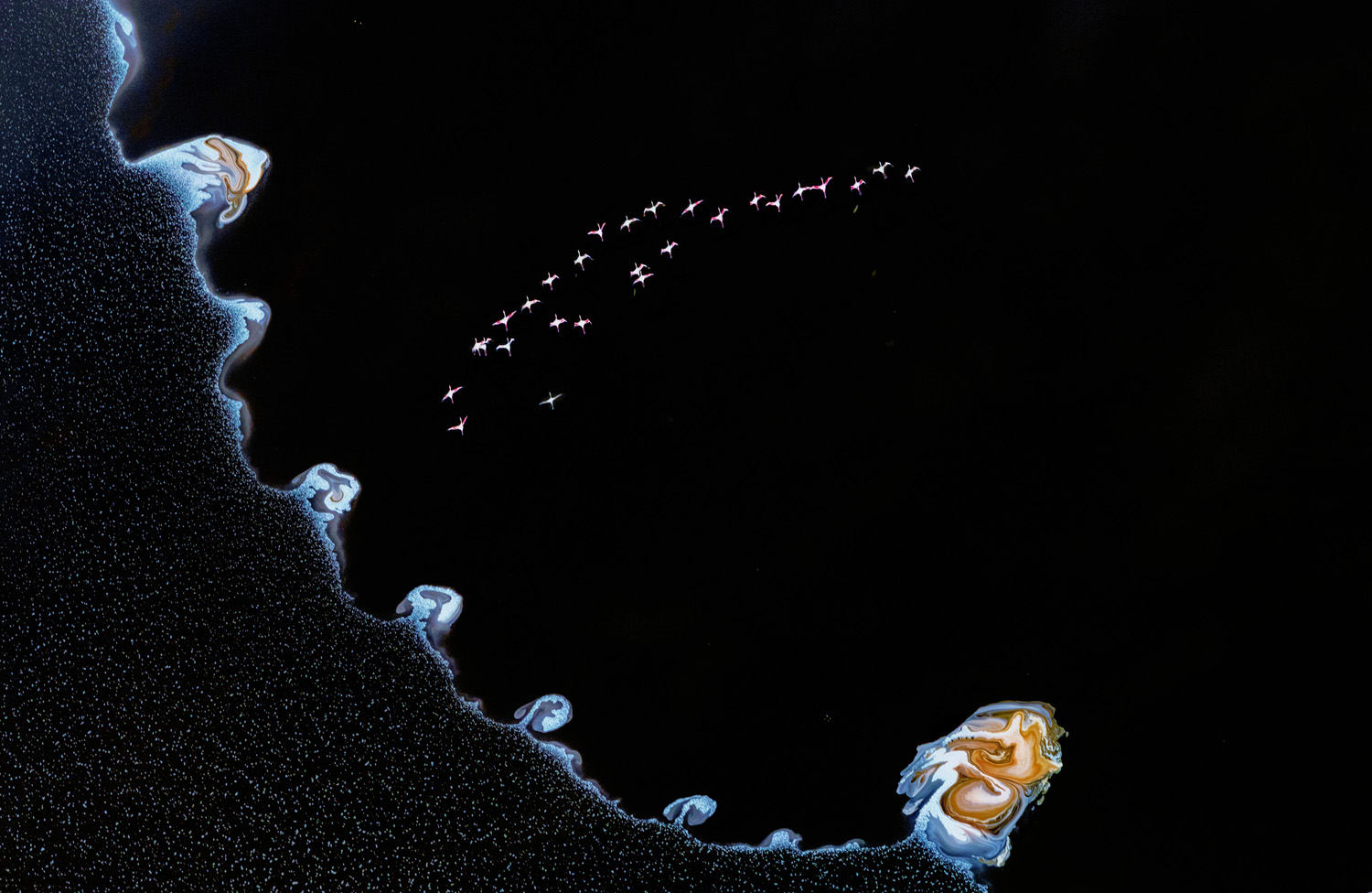
One of TPOTY 2021 ‘Landscapes & Adventure’ portfolio winner Jie Fischer’s images from Lake Magadi, Kenya. Nikon D850, 70-200mm lens, f/2.8, 1/2000sec, ISO 360. Image: Jie Fischer/www.tpoty.com
This photograph by Jie Fischer, is one of the images as part of the portfolio which won the Landscapes & Adventure category of Travel Photographer of the Year 2021 (TPOTY). The photographs in her portfolio were taken from a helicopter and show a colourful, almost abstract depicting flamingos over the remarkable coloured waters of Lake Magadi in Kenya.
She explained, ‘Lake Magadi is one of the inland lakes at the southernmost point of Kenya, belonging to the Rift Valley area of Kenya, formed by fault subsidence. During the dry season, it is 80% covered by sodium carbonate and is well known for its wading birds, including flamingos. In the dry season, there will be salt deposits around the lake, forming colourful patterns, depending on wind and wave. Large numbers of flamingos are often seen here.’
@jiefischerphotographer
Haines, Alaska by Pally Learmond

Pally Learmond won the ‘Landscapes & Adventure: Best Single Image’ category of TPOTY 2021 with this shot of a single skier in Alaska. Nikon D4, 400mm lens with 2.8 tele converter, f8, 1/2000sec, ISO 200. Image: Pally Learmond/www.tpoty.com
Pally Learmond won the ‘Landscapes & Adventure: Best Single Image’ category of TPOTY 2021 with this shot of a single skier in Haines, Alaska, USA.
He revealed, ‘Due to the close proximity of the Pacific Ocean, snow sticks to the mountains of southeast Alaska like nowhere else on earth. This creates a phenomenon called “spines” which form on top of the normally steep and rocky mountain faces. This provides professional free-ride skiers with a playground like no other. In this photo, Austrian professional free-skier Fabian Lentsch lets it all go on a mountain face called “Dirty Needle”.’
@pallylearmond
It’s a Long Road by Daniel Newton
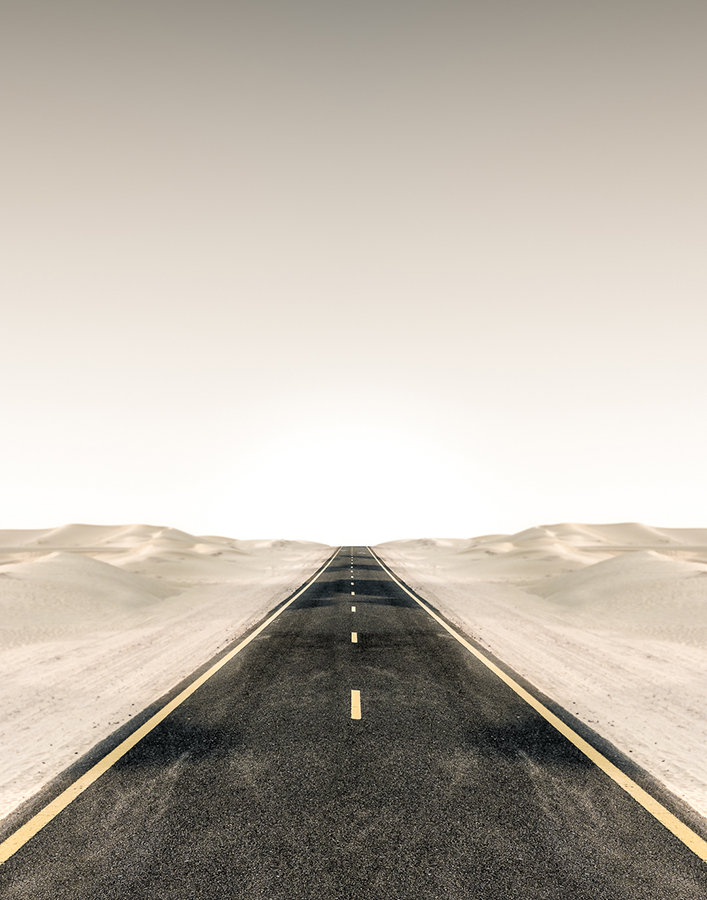
Daniel won Round 4, Landscape, with this minimalist shot
Daniel Newton won our Landscapes round of the Amateur Photographer of the Year 2021 competition. This was a unanimously recognised and well-received image, achieving placings and commendations from nine of the ten judges. A classic, bucolic landscape scene it most certainly is not, but that’s what makes it stand out. There’s an odd balance of bleakness and anticipation here.
Bleak, of course, thanks to the desolate sand dunes that flank the empty road, while the anticipation comes from the sense that the viewer is heading somewhere. We can’t help but be curious as to what might exist beyond the horizon.
The interesting processing adds to the overall effect. By desaturating and toning the image in the way he has, Daniel has enhanced the sense of other-worldliness.
Daniel also came second in the overall APOY competition and he shared his inspirations and tips here: APOY 2021 winners share their inspiration and tips ahead of 2022 competition
@dan.newtons
Gliding above the Gold by Dave Smith
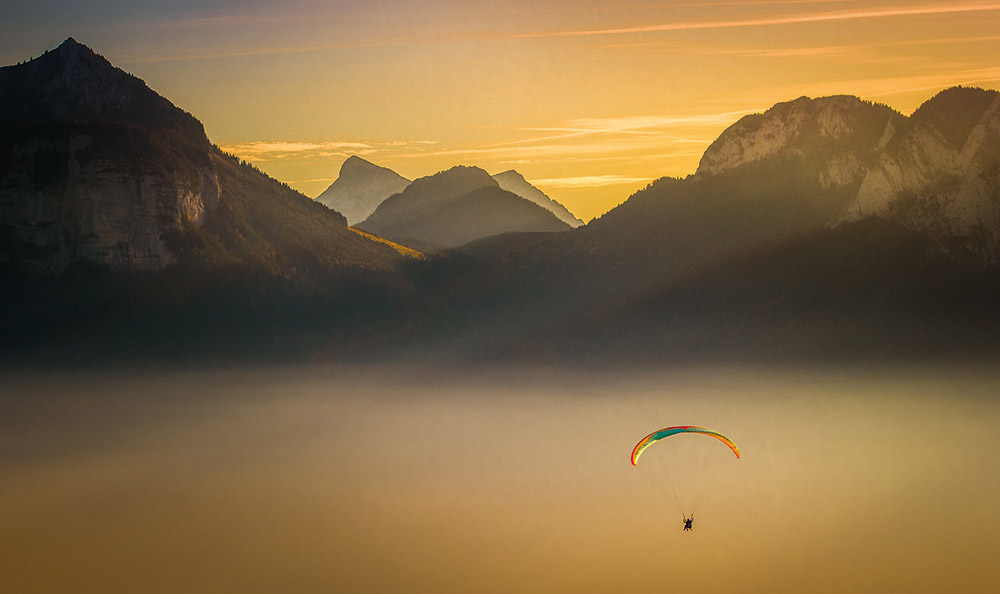
Dave Smith came third in our Landscapes round of the Amateur Photographer of the Year 2021 competition with his image captured above Lake Annecy in the south of France… and what a shot! This photograph transports the viewer right into the scene, making us feel as if we are on top of a mountain looking down upon the intrepid paragliders as they float over a mist-covered Lake Annecy.
Dave did well to compose so that the paragliders stand out against the softness of the lower part of the frame. Any higher, and they would have been lost against the shadows. He’s also adhered to the rule of thirds nicely, which works well here. Overall, an atmospheric and evocative capture.
@davewsphotography
Highway to the Stars by Jack Giam

Jack Giam from Australia won our Landscapes round of Young Amateur Photographer of the Year 2021.
The contrast between the bright orange of the traffic trails and the navy of the sky and water is what immediately catches the eye here. Jack has composed his shot very nicely, with the line of the road starting in the bottom right corner, then curving round and out of sight, leaving the viewer wondering where it leads.
In the right kind of daylight, this would have been a pleasing enough image, but taking the initiative to shoot it at night is what elevates it, and makes it a worthy winner.
@jackgiam
Bare Land by Lorenzo Poli
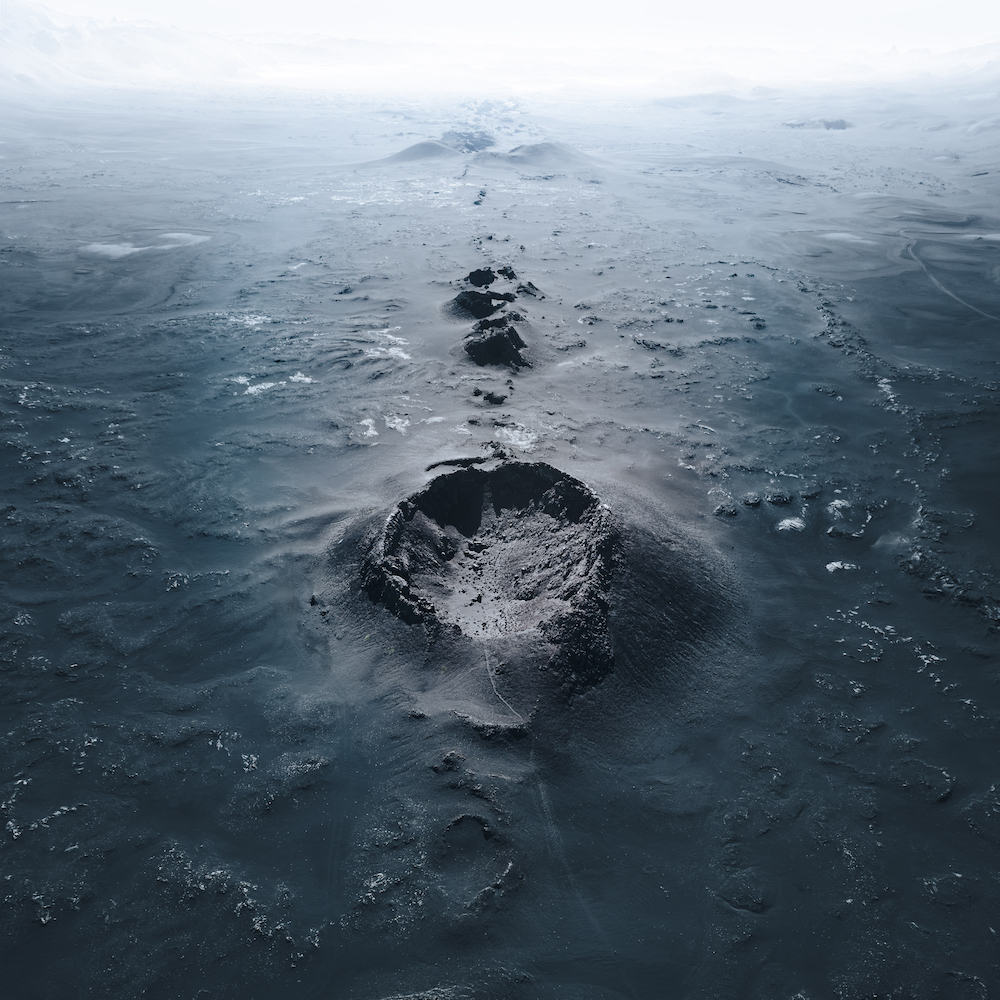
Bare Land. An uninhabitable volcanic desert in the Icelandic Highlands. The climatic conditions here are so harsh that, for the majority of the year, life doesn’t thrive. © Lorenzo Poli, Italy, Finalist, Professional, Landscape, 2022 Sony World Photography Awards
The ‘Life on Earth’ series by Lorenzo Poli, which won the Professional, Landscape category at 2022 Sony World Photography Awards, delves into the ethereal magic of nature and the mysterious beauty of an untamed world, depicted through a diverse set of landscapes. This photograph was taken at an uninhabitable volcanic desert in the Icelandic Highlands. The climatic conditions here are so harsh that, for the majority of the year, life doesn’t thrive.
Lorenzo Poli said, ‘Science and religions may all fall short in explaining the incredible miracle of life which, through millennials of evolution, has transformed barren land into a living planet. There is an untamed world between sacred and magic, where the essence of life is safeguarded by silence, where the outer and the inner world coincide. This is what I am seeking to photograph.’
@lorenzopoli.photography
Landscape with Trees by Federico Testi
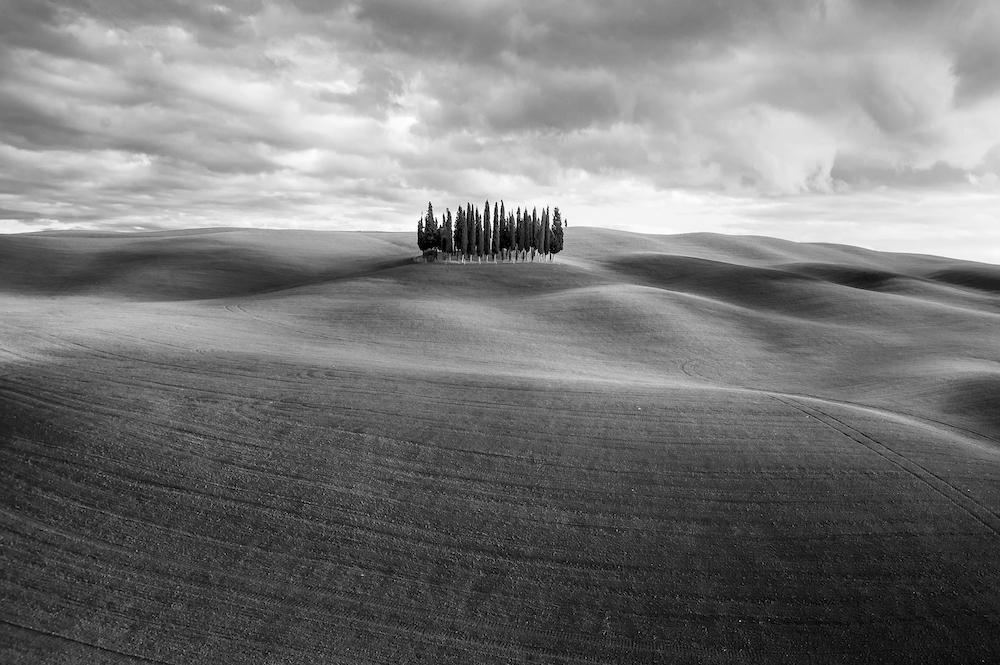
Landscape with trees, San Quirico d’orcia, Tuscany, Italy. © Federico Testi/World Nature Photography Awards 2021
Testi’s minimalist photograph Landscape with Trees won a Gold award in the Nature Art category of World Nature Photography Awards 2021.
Federico Testi explained, ‘The natural creativity of San Quirico d’orcia, in Tuscany, Italy. Waves, shapes and tone created by light, in harmony with the universe.’
South Island Landscape, New Zealand by Sam Wilson
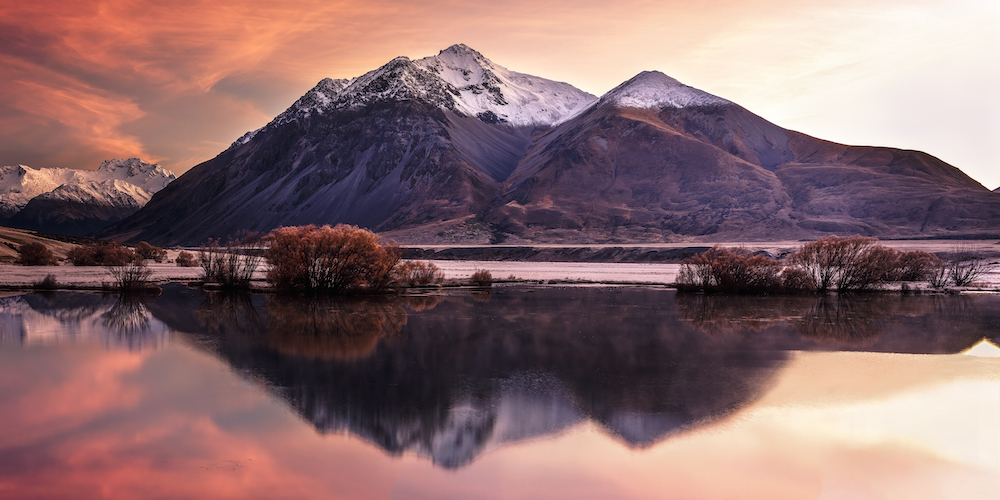
Landscape, South Island, New Zealand. © Sam Wilson/World Nature Photography Awards 2021
Sam Wilson won a Gold award in the Planet Earth’s Landscapes and Environments category of the World Nature Photography Awards 2021.
She revealed, ‘Travelling down random dirt roads can be so rewarding when you are greeted with scenes like this. Taken on South Island, New Zealand.’
@samwilson_photo
Solar Graphic by Andrius Repšys
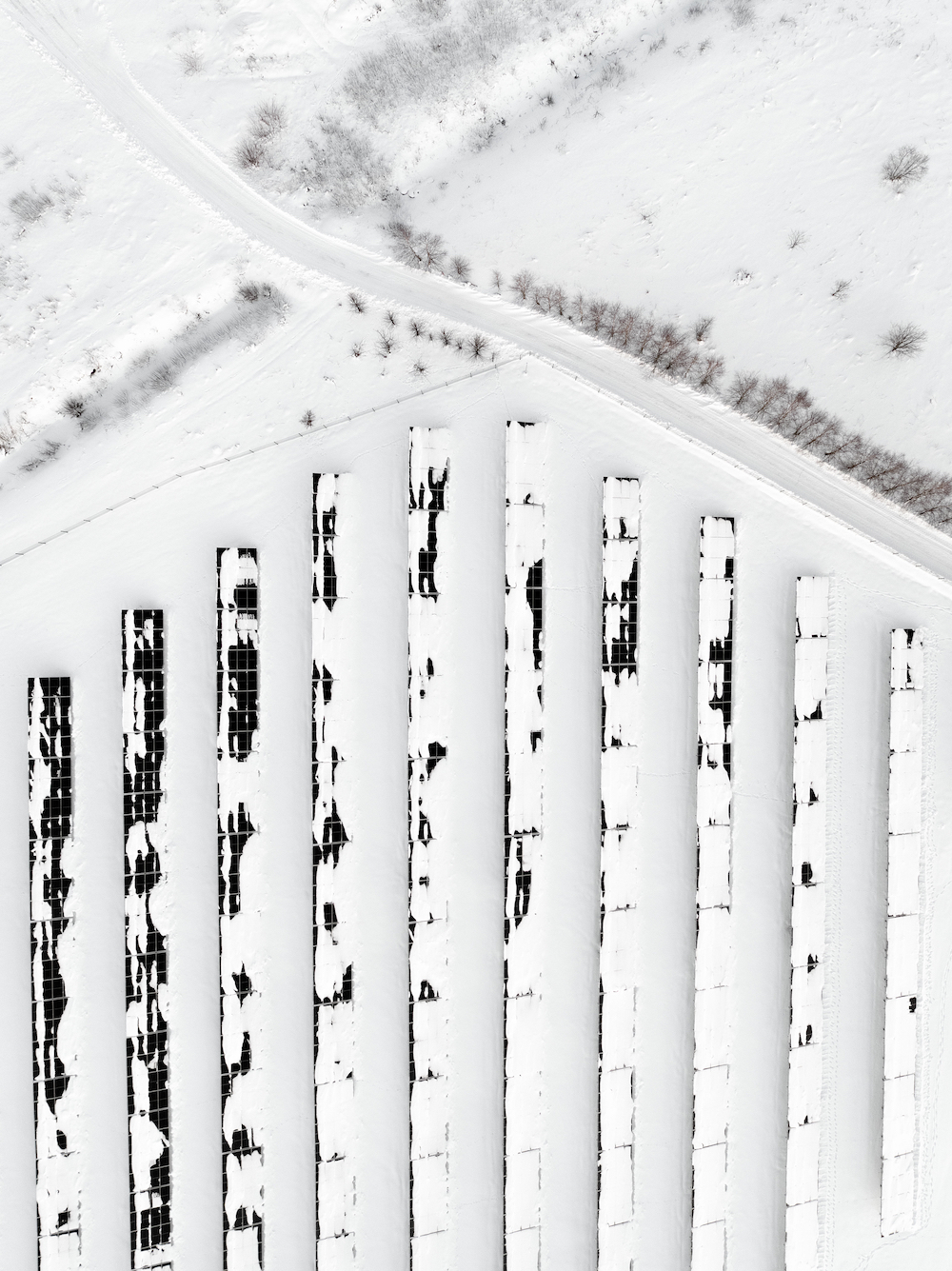
© Andrius Repšys, Lithuania, Finalist, Professional, Landscape, 2022 Sony World Photography Awards
Taken during a winter of unseasonably heavy snowfall caused by climate change, ‘Solar Graphic’ by Andrius Repšys (Lithuania) captures sustainable energy sources such as dams, wind turbines and solar batteries from above, reducing them to graphic abstractions.
In 2021, Lithuania once again experienced a winter of heavy snowfalls – a result of the climate crisis and global warming. Depicted in these photographs are sustainable energy sources such as dams, wind turbines and solar batteries – the very things we need in order to slow down the occurrences of climate disasters. Two of the three main elements of Solar Graphics – seasonality and sustainable energy – organically and purposefully complement each other.
Winter’s monochromatic palette helps reveal the graphic elements found in the white snow. As the land is disrupted by dark lines new images appear – a mouth full of dazzling white teeth or a robot with a surprised look on its face. The high vantage point reduces the landscape to abstraction allowing the viewer to find new meanings and interpretations in the photograph.
Repšys’ was a finalist in the professional category of Sony World Photography Awards 2022.
@andrius.repsys
Orchid by Zhu Jianxin

Orchid, taken on a DJI Mavic 2 Pro in Xinjiang, China. 1/240sec at f/6, ISO 100. Image: Zhu Jianxin/Skypixel
The Grand Prize winner in the Photo Category of the Skypixel 7th Anniversary Aerial Photo & Video Contest, was shot by Zhu Jianxin on a DJI Mavic 2 Pro.
The image, Orchid, shows an otherworldly sight of a frozen lake after a heavy snow fell in the Taklamakan Desert, China. With a simple change in perspective, several cracks on a frozen lake magically came together to form something akin to a portrait of an elegant orchid.
Jianxin explained, ‘Photography as an art form always comes from life. It is born from nature. I am amazed by how a drone changes my perspective and helps me capture the beauty of our world.’
Perfect Chaos by Sara Zanini
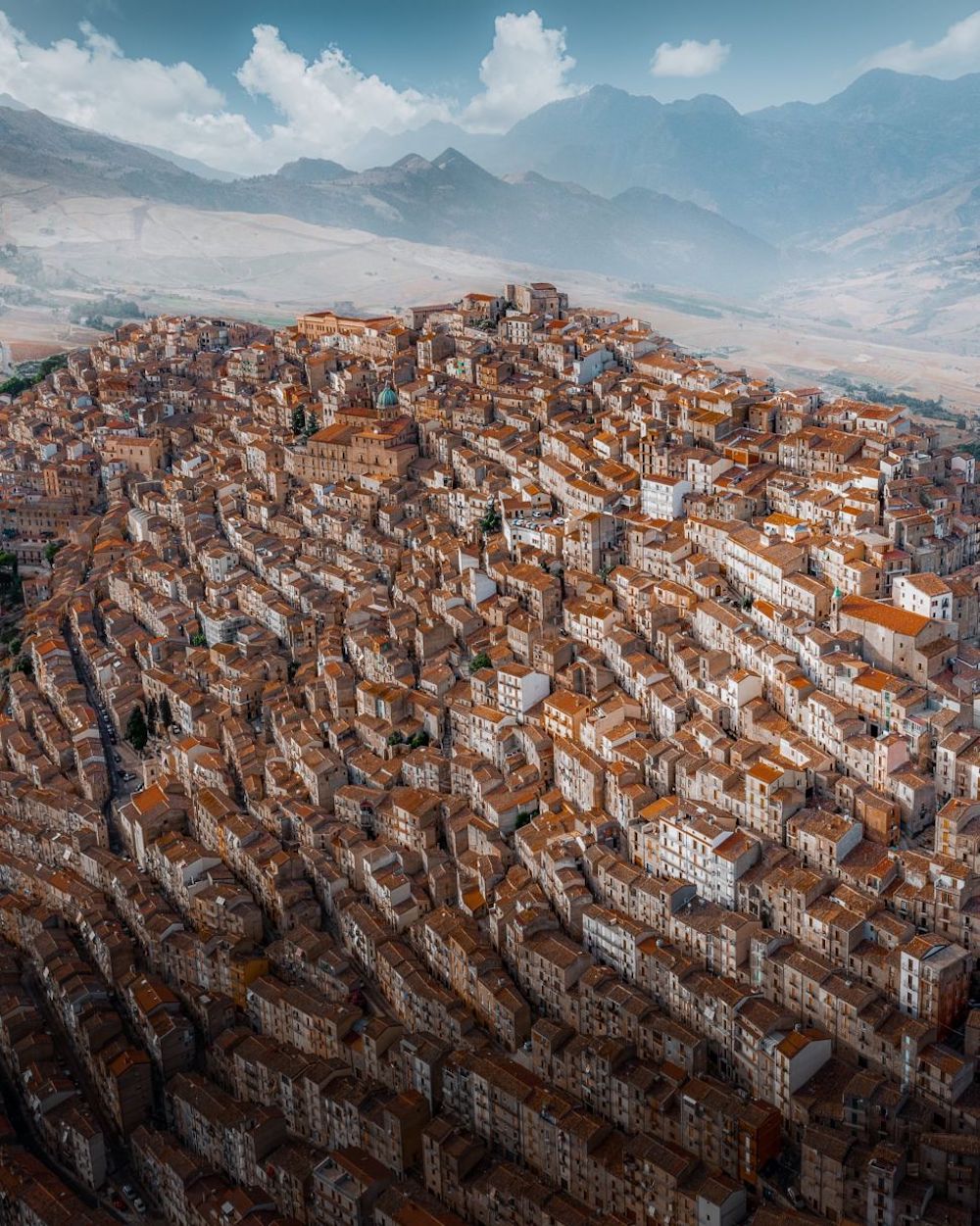
Perfect Chaos, shot on a DJI Mavic 2 Pro. Image: Sara Zanini/Skypixel
Sara Zanini’s photograph taken over the town of Gangi in Sicily was shot on a DJI Mavic 2 Pro and received a First prize in the Skypixel Aerial Photo Contest. This photograph shows a fantastic juxtaposition between the traditional urban town against the natural mountainous landscape.
@sarazaniniiiii
Room 504 by Charlotte Gibb

View of Yosemite Falls from a hotel room. Taken with a very long focal length of 560mm
Canon EOS R, 100-400mm + 1.4x III extender, 1/80sec at f/16, ISO 400
Charlotte’s stamping ground is California. It’s home to a wide variety of landscapes, from rugged coastlines to ancient Redwood trees and deserts. This photograph was taken opposite Yosemite Falls from a hotel room window. Firstly, what an incredible view to have from your room! Everything within this photograph, from the light and the falls to the focus drawn into the single tree is dreamy.
Speaking of intimate landscapes she said, ‘Intimate landscapes are compositions that have been derived from the larger scene. It could be a photograph of a small section of beach, or a group of trees, or it could be a photograph of a section of an entire mountain… My heart-of-hearts is with the Sierra Nevada mountains and Yosemite National Park, though… There is tremendous diversity, and as much as I go back again and again, I always come away with a new composition. My most meaningful work has come from these places.’
She shares her tips for capturing your own intimate landscapes here.
@charlottegibb
Knowlton, Dorset by Jeremy Walker
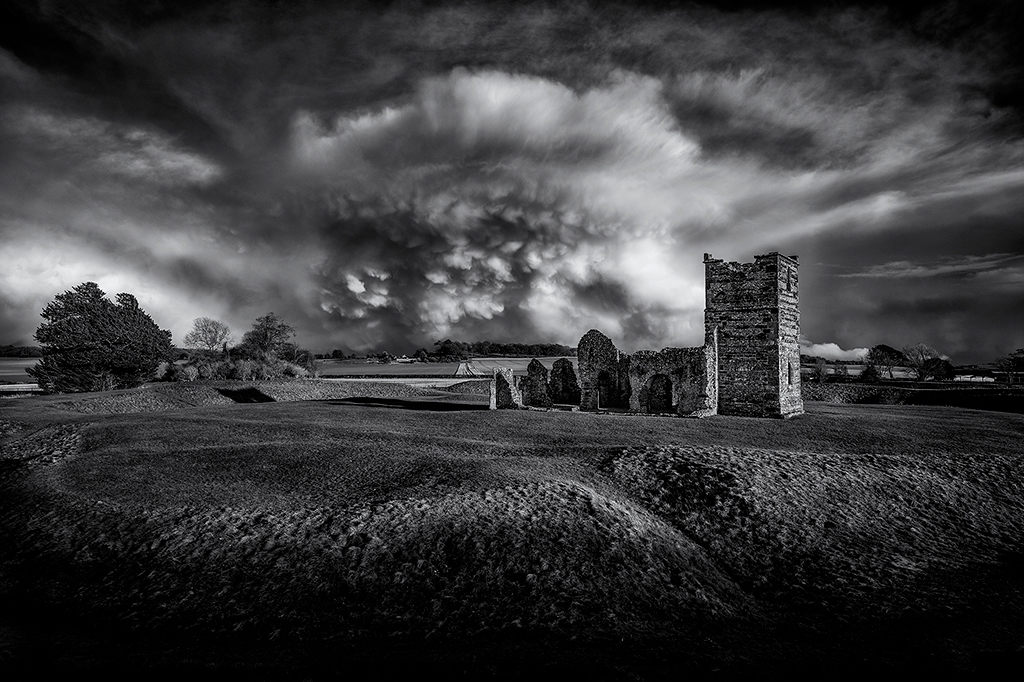
This moody, monochrome scene by award winning professional landscape photographer and regular AP contributor Jeremy Walker brings a lot of drama and atmosphere with the dark intense sky looming over Knowlton church in Dorset.
When speaking about creating mono landscapes, Jeremy said choosing a ‘subject matter where the mood and drama help tell a story – ancient stone circles, Neolithic earthworks, and abandoned buildings like old churches can all look amazing with stormy skies and fleeting patches of light.’
This photograph is a perfect example!
Jeremy shares his tips for capturing moody monochrome landscapes like this here: How to capture moody monochrome landscapes
@jeremywalkerphotography
Jeremy will also be leading some of our upcoming Photography Holidays, in partnership with Zoom Photo Tours, see all information of our trips here.
Isle of Skye, 16-19 February 2023
Stepping Stones #2 by Lee Frost
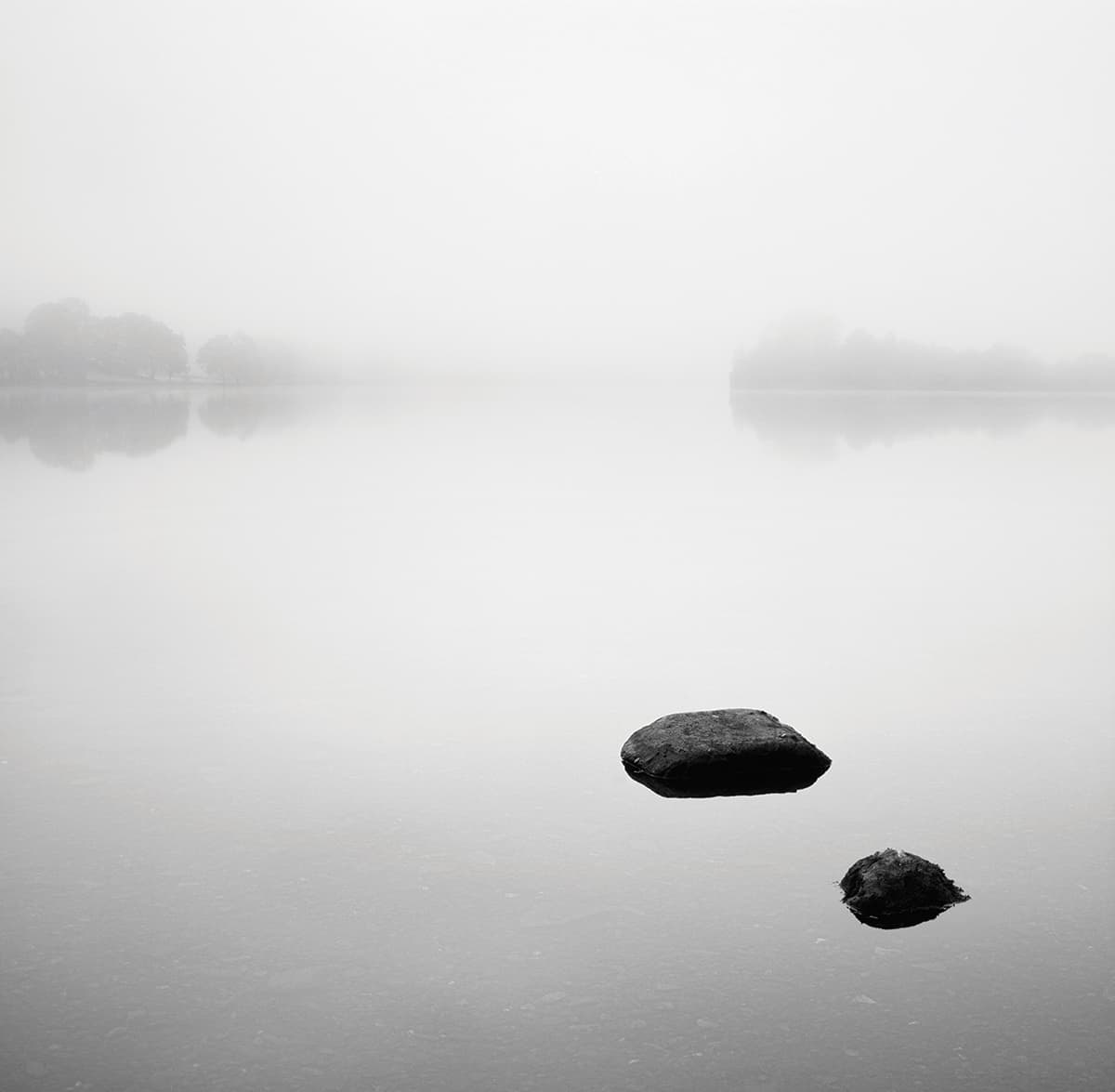
Derwentwater, Lake District. Mist and fog are ideal for minimalist mono images. Canon EOS 5D Mk II, 24-70mm, 1/250sec @ f/8, ISO 400
Black and white images can be simpler, more dramatic, more evocative and more atmospheric than colour. The minimal black and white shot by Lee Frost feels a lot calmer than Walker’s suspenseful landscape above. Taken on a foggy morning by Grasmere, Lake District, this image however doesn’t lack in atmosphere.
Whether you feel calm and at peace, or a sense of eeriness, Frost’s image is successful compositionally, with the stepping stones leading us into the lake.
See his tips for black and white photography.
@leefrostphotography
The Far Hills by Rachael Talibart

The Far Hills, 2017. Canon EOS 5DS R, 24-70mm, 0.8sec at f/16, ISO 100
For someone who describes themselves as ‘a poor swimmer and a poorly sailor’ it seems incredible that award-winning coastal and seascape photographer Rachael Talibart chose the sea as her muse.
Her captivating coastal photography has been recognised with awards such as Black+White Photographer of the Year in 2018 and winning the Sunday Times Magazine’s Landscape Photographer of the Year in 2016.
Talibart has had three monographs of her work published – including Sirens and Tides and Tempests – and she runs her f11 photography workshops as well as leading photography tours for Ocean Capture.
Talibart was also featured as one of our 12 top UK woman photographers you must follow
How to take great coastal shots and seascapes this winter
@rachaeltalibart
The Sacred Garden by Gray Eaton
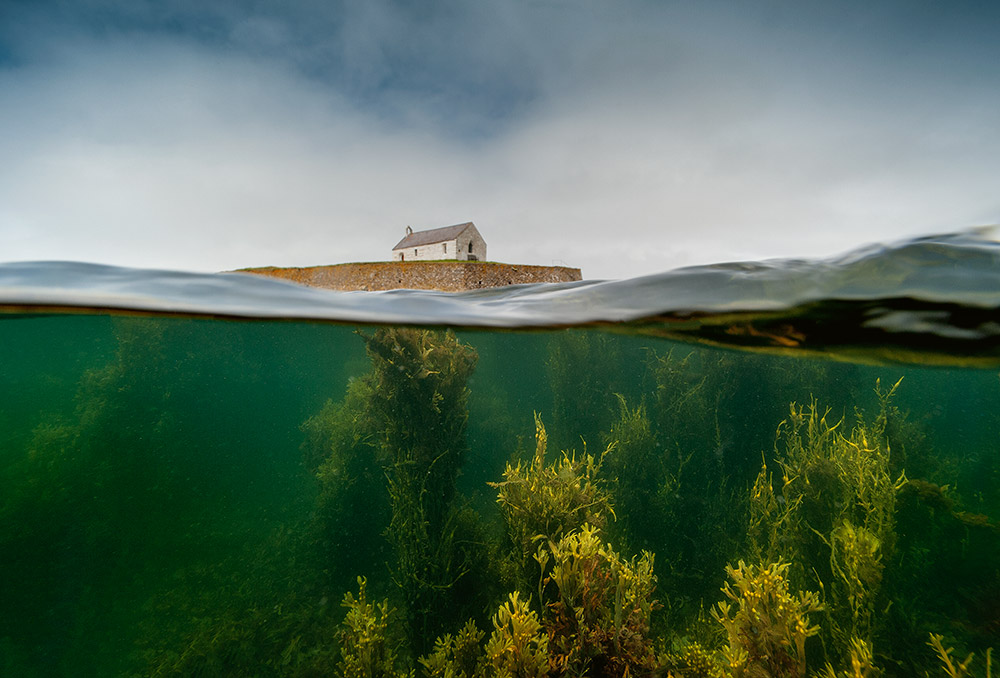
Image: Gray Eaton
Gray Eaton won the Coast category of Landscape Photographer of the Year 2022. He said, ‘This tiny chapel – St Cwyfan – has been photographed many times. Inaccessible at high tide, Gray wanted to capture something that was a little different. In a single frame he wanted to show both the chapel and the aquatic world surrounding it, along with the submerged garden of algae.‘
Sutton Park by Verity Milligan
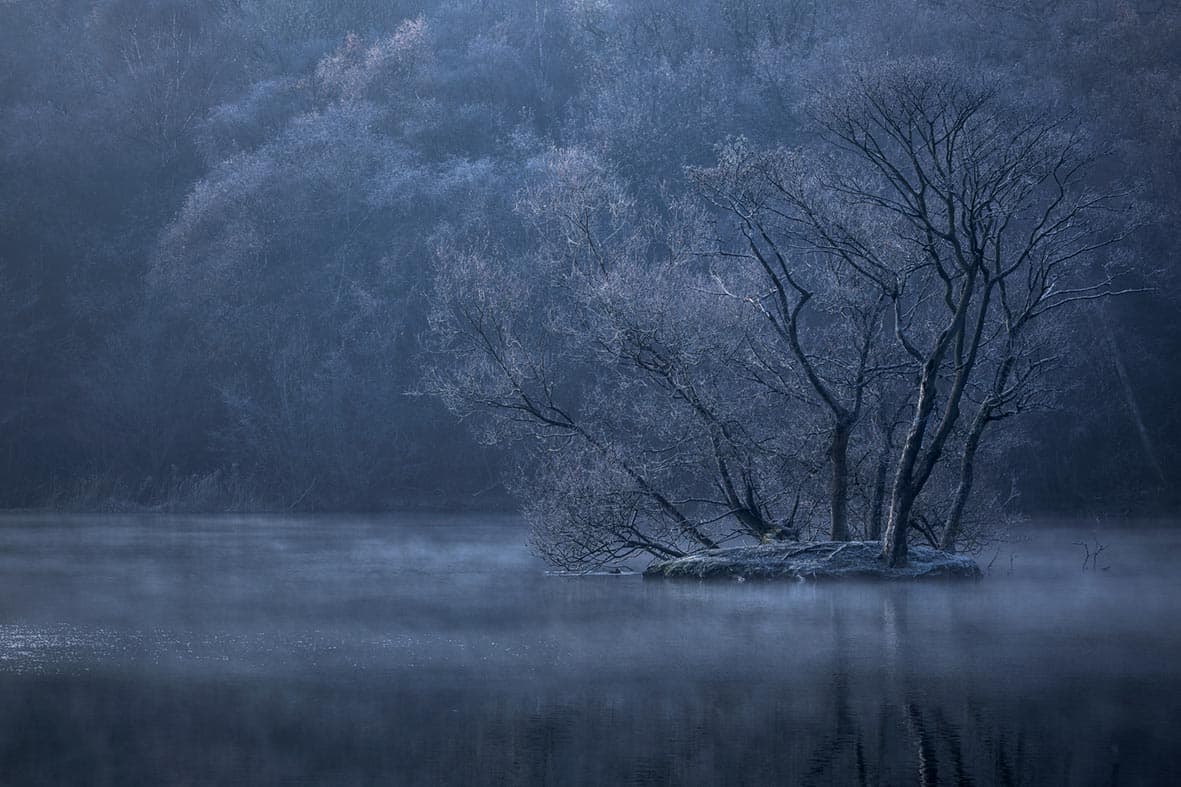
Canon 5D Mk IV + 100-400mm
Taken in Sutton Park, Birmingham, Verity Milligan’s photograph was taken on a cold morning in late autumn/early winter.
When speaking of this photograph on Instagram, she said, ‘This is one of those examples of why I love using a telephoto for landscape imagery. The sky would have added little to this composition and distracted from the main event — that frozen little island.’
Milligan’s images have featured in several exhibitions and have been highly commended in major photography awards such as Outdoor Photographer of the Year, British Life Photographer of the Year and Scottish Landscape Photographer of the Year.
Image featured in: Pro tips for great landscape photography
Milligan was also featured as one of our 12 top UK woman photographers you must follow
@veritymilligan
Get more inspiration & tips
Feeling inspired by our selection of best landscape photographs? View our landscape photography tips and get shooting some spectacular shots!
If you are new to landscapes, check out our beginners guide to Landscape Photography.
Amateur Photographer of the Year 2023
Submit your best landscape photographs to Amateur Photographer of the Year 2023. The 2023 competition launches on Wednesday 8th February.
More information here: APOY
See more competitions to enter here.
Get your best landscape photographs on a photography holiday with AP
Experience the best landscapes of the UK and the rest of the world on our photography holidays, in association with Zoom Photo Tours. Upcoming trips and photo vacations include:
Lofoten Winter Magic with Serkan Günes & Florian Warnecke – 20-26 February 2023
Faroe Islands with Serkan Günes – 22-27 August 2023
Further reading:
The best landscape photography books for inspiration
How to photograph low light urban landscapes
See the top 20 best travel photographs!
Follow AP on Facebook, Twitter, Instagram, and YouTube.
